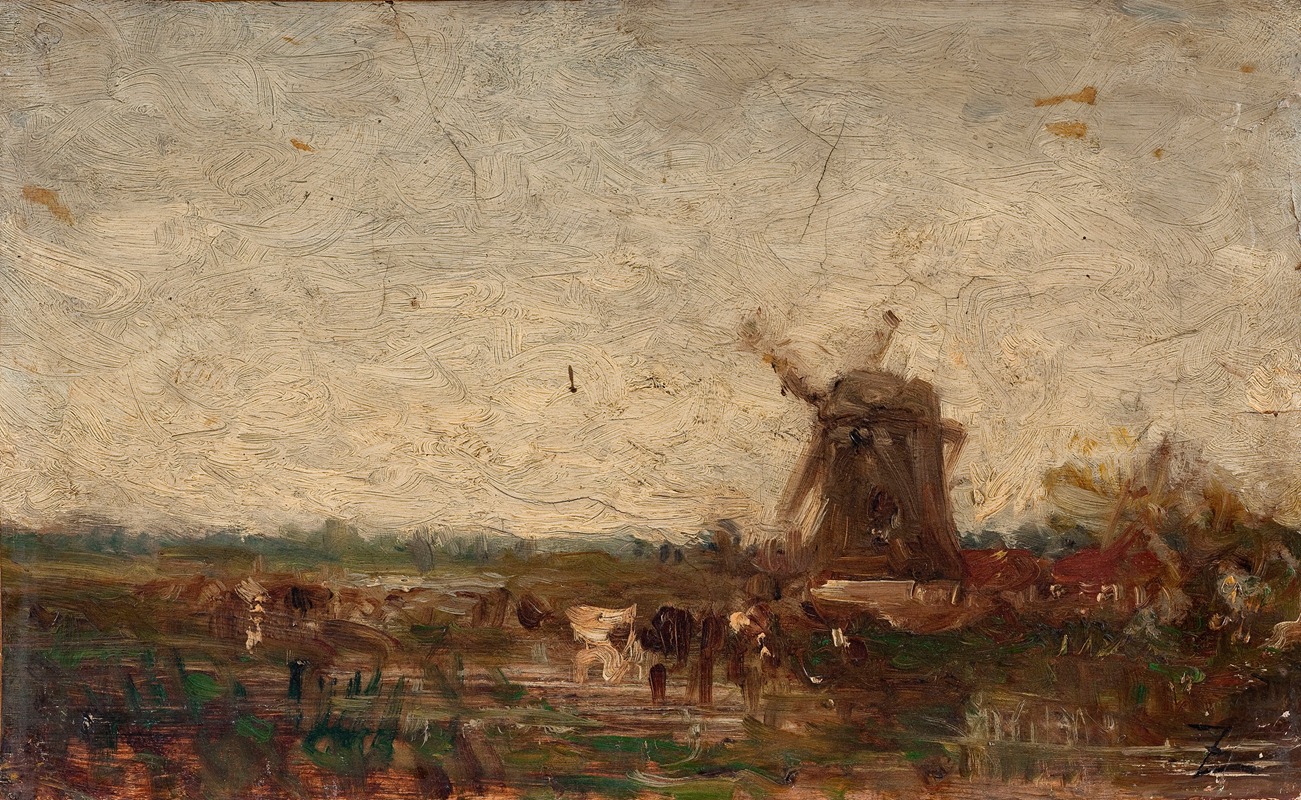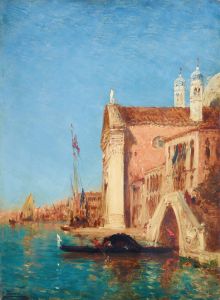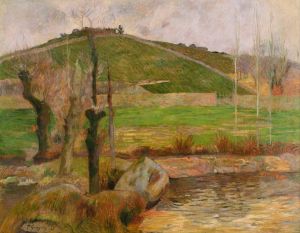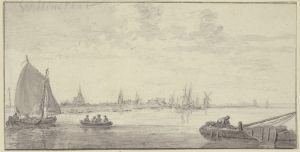
Hollande, le moulin
A hand-painted replica of Félix Ziem’s masterpiece Hollande, le moulin, meticulously crafted by professional artists to capture the true essence of the original. Each piece is created with museum-quality canvas and rare mineral pigments, carefully painted by experienced artists with delicate brushstrokes and rich, layered colors to perfectly recreate the texture of the original artwork. Unlike machine-printed reproductions, this hand-painted version brings the painting to life, infused with the artist’s emotions and skill in every stroke. Whether for personal collection or home decoration, it instantly elevates the artistic atmosphere of any space.
Félix Ziem was a French painter known for his vibrant landscapes and cityscapes, particularly those depicting Venice and the Mediterranean. Born on February 25, 1821, in Beaune, France, Ziem became associated with the Barbizon School, a group of painters who were part of an art movement towards realism in art, which arose in the context of the Romantic Movement. Ziem's work is characterized by its lively use of color and light, capturing the essence of the scenes he painted.
"Hollande, le moulin" is one of Ziem's works that reflects his interest in capturing the beauty of landscapes and architecture. The title translates to "Holland, the Mill," suggesting that the painting depicts a scene in the Netherlands, a country known for its iconic windmills and flat landscapes. While Ziem is primarily celebrated for his Venetian scenes, his travels across Europe also inspired a variety of other works, including those set in the Netherlands.
Ziem's technique often involved the use of vivid colors and dynamic brushwork, which brought a sense of movement and life to his paintings. His ability to capture the interplay of light and shadow was particularly notable, lending his works a luminous quality that was admired by his contemporaries and continues to be appreciated today.
The painting "Hollande, le moulin" likely features a windmill, a common motif in Dutch landscape painting, symbolizing the country's relationship with water management and agriculture. Windmills are an integral part of Dutch heritage and have been a popular subject for artists over the centuries. Ziem's interpretation would have been influenced by his own style and artistic goals, focusing on the atmospheric effects and the natural beauty of the scene.
Ziem's works were well-received during his lifetime, and he enjoyed considerable success. He exhibited regularly at the Paris Salon, and his paintings were sought after by collectors. In 1857, he was awarded the prestigious Legion of Honor, reflecting his status as a respected artist in France.
Today, Félix Ziem's paintings are held in numerous public and private collections around the world. His ability to convey the essence of a place through his art has ensured his lasting legacy. While specific details about "Hollande, le moulin" may not be extensively documented, it remains a part of Ziem's broader oeuvre, which continues to be studied and appreciated for its contribution to 19th-century landscape painting.
In summary, "Hollande, le moulin" by Félix Ziem is a testament to the artist's skill in capturing the beauty of European landscapes. Through his use of color and light, Ziem was able to bring to life the scenes he painted, leaving a lasting impact on the world of art.


















